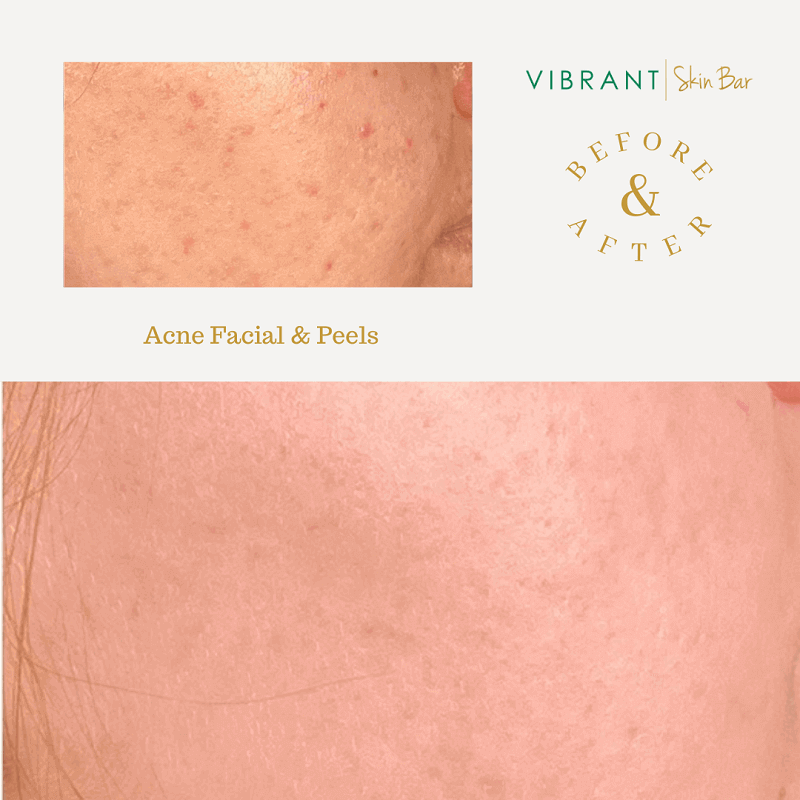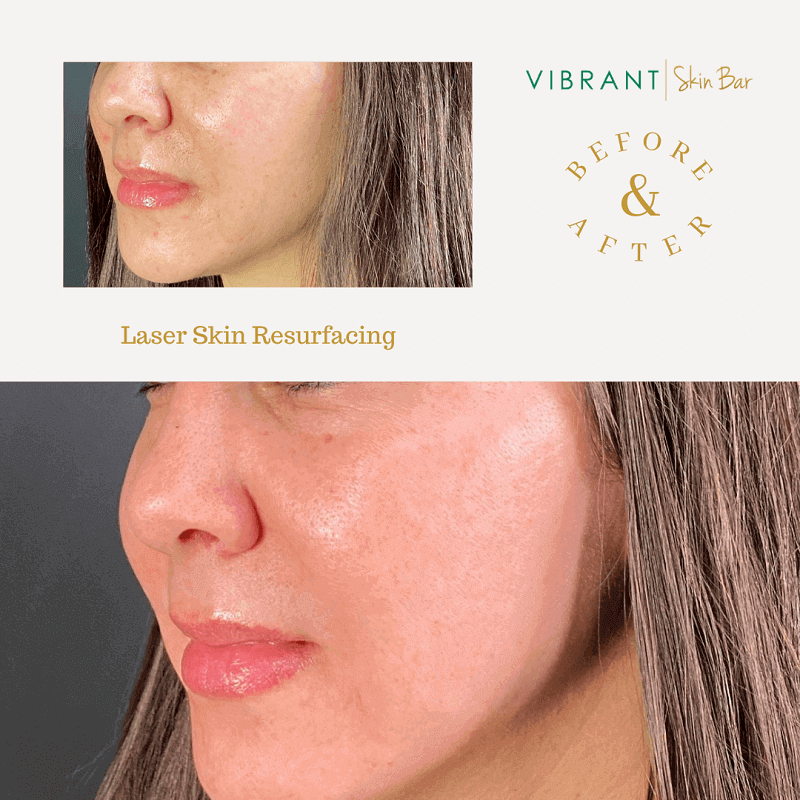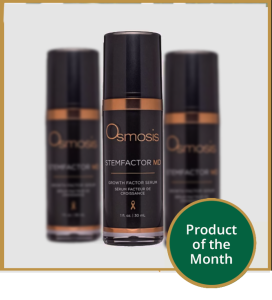Advances in the cosmetics industry have brought forth numerous ways to reverse the signs of aging. Chemical peels and laser therapy are among the most popular anti-aging treatments because of their versatility and the multiple benefits they offer. Both treatments have several levels of intensity, providing customizable options for the patient’s skin concerns.
Let’s look at how chemical peels are different from laser resurfacing, which conditions they treat, and how to determine what’s best for you.

What Is a Chemical Peel?
A chemical peel is a skin resurfacing treatment. Exfoliation is achieved by the application of chemical solutions that penetrate the skin. They cause controlled damage, removing dead cells and promoting the growth of new, youthful-looking skin.
Types of Chemical Peel
There are three types of chemical peels:
- Light peels provide subtle results that last about one month and require no downtime.
- Medium peels penetrate deeper skin layers and provide more visible results but need recovery time of up to one week.
- Deep peels cause a dramatic skin transformation that lasts for years, but the procedure carries more risk and requires anesthesia and recovery time of up to several months.
Skin experts often recommend laser resurfacing instead of deep peels because the two treatments provide similar results, with the laser therapy carrying less risk of complications.
What Is Laser Treatment?
Laser resurfacing involves using a laser device that sends controlled pulsed light to the target area. The light energy heats skin layers and stimulates increased collagen production. The procedure tightens skin, improves tone, and reduces irregularities such as wrinkles, acne scars, and blemishes.
Note: Read our article and learn about BBL laser treatment.
Types of Laser Techniques
All laser techniques are grouped into two main categories:
- Non-ablative lasers that heat the skin to stimulate collagen production without peeling the skin’s top layer. They promote cell turnover and bring rejuvenated skin to the surface.
- Ablative laser treatments peel off the skin’s outer layer (epidermis) and heat the underlying layer (dermis). This stimulates the production of collagen. They are more invasive than non-ablative treatments and produce more dramatic results but require more downtime.
Note: Find out what are the benefits of collagen for the skin and how can you restore it.
Chemical Peel Vs. Laser Treatment
The following table sums up the main differences between chemical peels and laser resurfacing treatments.
| Chemical Peel | Laser Treatment | |
|---|---|---|
| How it works | A chemical solution removes the skin’s top layers to bring new, improved skin to the surface. | A laser device heats the outer skin layers to stimulate collagen production and bring new, improved skin to the surface. |
| Conditions it treats | Age spots, discoloration, hyperpigmentation, fine lines and wrinkles, acne, acne scars. | Fine lines and deep wrinkles, acne scars, blemishes, sagging skin. |
| Risks and side effects | Common: redness, swelling, itching, scaling. Severe: infection, scarring, discoloration. Deep peels may cause liver, heart, or kidney damage. | Common: redness, swelling, itching Severe: infection, scarring, hyperpigmentation. |
| Recovery time | No downtime for light peels. Up to one week for medium peels. Up to several months for deep peels. | Up to two weeks. |
| Results duration | One month for light peels. Four to six months for medium peels. Several years for deep peels. | Several years. |
Chemical Peel vs. Laser: What Conditions Can Be Treated?
Chemical Peel
Chemical peels are good for treating sun-damaged skin, age spots, discoloration, hyperpigmentation, acne, and fine lines. Medium and deep peels effectively remove atrophic scars that are left by severe acne or chickenpox.
Note: Find out how to remove age spots and what treatment might work for you.
Laser
Photo facial laser therapy targets pigmentation issues and fine lines. Halo Pro resurfacing is a better solution for more prominent wrinkles around the eyes and mouth, blemishes, and deep scars. It also tightens pores and treats skin laxity.
Chemical Peel vs. Laser: The Procedures
Chemical Peels
Chemical peels involve the use of chemical solutions to exfoliate the skin. Light peels don’t require a numbing cream and anesthesia before the procedure. Medium peels may require sedation. Deep peels require IV sedation and local or general anesthesia.
The medical provider brushes a chemical solution to the target area and leaves it to penetrate the skin for 10-30 minutes, depending on the chemical peel type. The provider then washes your face and neutralizes the chemical solution.
Laser
For non-ablative laser treatment, you may receive a numbing cream. Some ablative techniques, such as CO2 laser therapy, require sedation and anesthesia.
The medical provider handles a laser device to send pulsating light to the target area during the treatment. Unlike chemical peels that cover the whole treatment area (i.e., the face), lasers can provide spot treatment, focusing on one specific area – a scar, crow’s feet, etc.
Chemical Peel vs. Laser: The Ideal Candidate
If you want to rejuvenate your skin, reverse the effects of sun damage, or remove acne and acne scars, you are a good candidate for chemical peels and laser therapy. Your medical provider will help you choose the best treatment for your skin condition.
You need to resolve an active skin infection, open wound, cold sores, or acne breakout before you can get a peel or laser treatment.
Pregnancy, keloid scarring, and the use of certain medications may prevent you from having the treatment.
Note: Find what is the best chemical peel for acne scars and how to choose the best treatment for your skin.
Does Skin Tone Affect What Treatment I Get?
Your skin tone will largely affect what treatment your medical provider recommends. Peels and laser resurfacing are both equally effective for lighter skin tones. Patients with darker complexions may benefit more from chemical peels as laser treatments pose the risk of unwanted results.
Consult your medical provider to determine the best course of action for your skin tone and the issue you want to treat.
Chemical Peel vs. Laser: The Results

Chemical peels improve the tone and texture of sun-damaged skin, reduce the appearance of wrinkles and acne scars, and rejuvenate the skin.
Light chemical peels require maintenance treatments every four to six weeks, while deep peels provide long-lasting results.

The benefits of laser therapy are similar to the benefits of chemical peels, but laser resurfacing is more effective at reducing acne scars and deep wrinkles.
The results after a laser treatment may last up to five years, depending on the laser treatment type.
Chemical Peel vs. Laser: Risks and Side Effects
Chemical peels and laser treatments are generally safe when performed by licensed and experienced medical professionals. The safety of the procedure also depends on your adherence to pre and post-treatment skincare routines recommended by your medical provider. However, there are some side effects that these two treatments may cause:
Chemical Peel
Chemical peels may cause the following reactions:
| Common side effects | Rare side effects |
|---|---|
| Redness Swelling Itching Scaling Pigmentation | Infection Scarring Heart, kidney, liver damage (with deep peels) |
Laser
Laser resurfacing may cause the following reactions:
| Common side effects | Rare side effects |
|---|---|
| Redness Swelling Itching Pigmentation | Infection Scarring Acne (with an ablative laser) Scarring (with an ablative laser) Ectropion or turning of the eyelid (with an ablative laser) |
The types of chemical peel and laser therapy determine their potential risks.
Deep chemical peel risks are comparable to those of laser resurfacing. Light chemical peel risks are comparable to those of photo laser treatments.
Chemical Peel vs. Laser: Aftercare
Follow your medical provider’s aftercare recommendations to minimize the risks of side effects and complications from chemical peels and laser resurfacing.
Here are some general aftercare tips:
- Avoid the sun, tanning beds, saunas, hot tubs.
- Avoid intensive physical activity.
- Use gentle skin care products.
- Use moisturizers regularly.
- Apply sunscreen when outdoors.
Note: If you are wondering how to choose a sunscreen, check out our article and find out the things you need to consider.
Chemical Peel vs. Laser: Cost
The cost of a chemical peel and laser treatment depends on the type of treatment, the severity of the skin issue, and the medical provider’s expertise and location.
At Vibrant Skin Bar, light chemical peels cost $99, medium chemical peels cost $125, and laser treatments cost from $350 for photo facial laser therapy to $1,200 for Vibrant resurfacing laser treatment.
Chemical Peel Vs. Laser: Which One Is Better?
Chemical peels and laser resurfacing treatments provide similar effects, but the procedures are different. Depending on your skin issue, one may be better than the other. You will determine this during a consultation with your medical provider.
Chemical peels are usually better for patients with darker skin, while patients with deep wrinkles or scars benefit more from laser therapy. Sometimes, skin experts recommend a combination of these two treatments for the best results.
Your skin goals, budget, and how much time you can spend in recovery will also affect your choice of treatment.
Conclusion
Chemical peels and laser therapy are highly effective procedures for the treatment of damaged skin and they both leave you with a younger-looking complexion.
Think about the pros and cons of each treatment and consult with a trusted medical provider to determine the best way to reverse signs of aging and enjoy a youthful glow.




